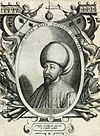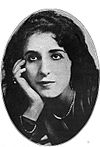
Mehmed II, commonly known as Mehmed the Conqueror, was twice the sultan of the Ottoman Empire from August 1444 to September 1446 and then later from February 1451 to May 1481.

Murad II was twice the sultan of the Ottoman Empire from 1421 to 1444 and from 1446 to 1451.
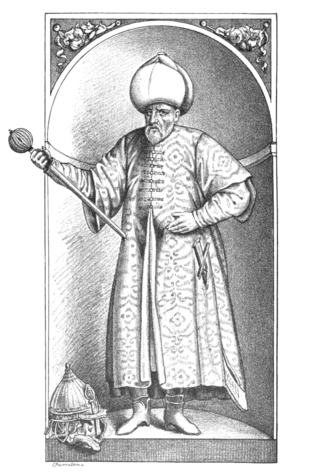
Sokollu Mehmed Pasha was an Ottoman statesman of Serbian origin most notable for being the Grand Vizier of the Ottoman Empire. Born in Ottoman Herzegovina into an Orthodox Christian family, Mehmed was recruited as a young boy as part of so called "blood tax" to serve as a janissary to the Ottoman devşirme system of recruiting Christian boys to be raised as officers or administrators for the state. He rose through the ranks of the Ottoman imperial system, eventually holding positions as commander of the imperial guard (1543–1546), High Admiral of the Fleet (1546–1551), Governor-General of Rumelia (1551–1555), Third Vizier (1555–1561), Second Vizier (1561–1565), and as Grand Vizier under three sultans: Suleiman the Magnificent, Selim II, and Murad III. He was assassinated in 1579, ending his near 15-years of service to several Sultans, as sole legal representative in the administration of state affairs.

The Ottoman Empire was founded c. 1299 by Osman I as a small beylik in northwestern Asia Minor just south of the Byzantine capital Constantinople. In 1326, the Ottomans captured nearby Bursa, cutting off Asia Minor from Byzantine control. The Ottomans first crossed into Europe in 1352, establishing a permanent settlement at Çimpe Castle on the Dardanelles in 1354 and moving their capital to Edirne (Adrianople) in 1369. At the same time, the numerous small Turkic states in Asia Minor were assimilated into the budding Ottoman sultanate through conquest or declarations of allegiance.

Köprülü Mehmed Pasha was Grand Vizier of the Ottoman Empire and founding patriarch of the Köprülü political dynasty, a family of viziers, warriors, and statesmen who dominated the administration of the Ottoman Empire during the last half of the 17th century, an era known as the Köprülü era. He helped rebuild the power of the empire by rooting out corruption and reorganizing the Ottoman army. As he introduced these changes, Köprülü also expanded the borders of the empire, defeating the Cossacks, the Hungarians, and most impressively, the Venetians. Köprülü's effectiveness was matched by his reputation.

Zaganos or Zagan Pasha was an Albanian Ottoman military commander, with the titles and ranks of kapudan pasha and the highest military rank, grand vizier, during the reign of Sultan Mehmed II "the Conqueror". Originally a Christian, who was conscripted and converted through the devşirme system, he became a Muslim and rose through the ranks of the janissaries. He became one of the prominent military commanders of Mehmed II and a lala – the sultan's advisor, mentor, tutor, councillor, protector, all at once. He removed his rival, the previous Grand Vizier Çandarlı Halil Pasha the Younger, amid the fall of Constantinople. He later served as the governor of Thessaly of Macedonia.

Cezayirli Gazi Hasan Pasha or Hasan Pasha of Algiers was an Ottoman Grand Admiral (1770–90), Grand Vizier (1790), and general in the late 18th century.
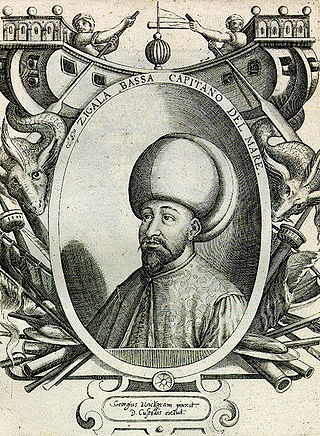
Cığalazade Yusuf Sinan Pasha, his epithet meaning "son of Cicala", was an Ottoman Italian statesman who held the office of Grand Vizier for forty days between 27 October to 5 December 1596, during the reign of Mehmed III. He was also a Kapudan Pasha as well as a military general. He was one of the most capable statesmen of the Ottoman Classical Age, having contributed to the eastwards expansion of the empire at the expense of Persia and successfully defended Ottoman Hungary from Habsburg invasion. However, because of court intricacies, he resigned from the Vizierate after just over a month in office.
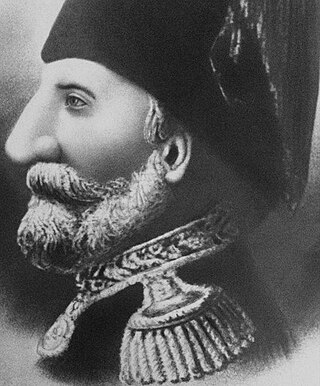
Koca Hüsrev Mehmed Pasha was an Ottoman admiral, reformer and statesman, who was Kapudan Pasha of the Ottoman Navy. He reached the position of Grand Vizier rather late in his career, between 2 July 1839 and 8 June 1840 during the reign of Abdulmejid I. However, during the 1820s, he occupied key administrative roles in the fight against regional warlords, the reformation of the army, and the reformation of Turkish attire. He was one of the main statesmen who predicted a war with the Russian Empire, which would eventually be the case with the outbreak of the Crimean War.

Piali Pasha was an Ottoman Grand Admiral between 1553 and 1567, and a Vizier (minister) after 1568. He is also known as Piale Pasha in English.
Pasha was a high rank in the Ottoman political and military system, typically granted to governors, generals, dignitaries, and others. Pasha was also one of the highest titles in the 20th-century Kingdom of Egypt and it was also used in Morocco in the 20th century, where it denoted a regional official or governor of a district.
The territorial evolution of the Ottoman Empire spans seven centuries.

The following outline is provided as an overview of and topical guide to the Ottoman Empire:

Baltacı Mehmet Pasha was an Ottoman statesman who served as grand vizier of the Ottoman Empire, first from 1704 to 1706 and again in 1710 to 1711, and as Kapudan Pasha in 1704.
Kemankeş Kara Mustafa Pasha was an Ottoman Albanian military officer and statesman who served as Kapudan Pasha and Grand Vizier of the Ottoman Empire.
Kara Murat Pasha, or Kara Dev Murad Pasha, lit. Courageous Giant Murat Pasha in Ottoman Turkish;, was an Ottoman Albanian statesman and military officer. He served as Kapudan Pasha and twice as Grand Vizier. His epithet Kara ("black") refers to his courage and Dev ("giant") to his physical size.

The Eyalet of the Archipelago was a first-level province (eyalet) of the Ottoman Empire. From its inception until the Tanzimat reforms of the mid-19th century, it was under the personal control of the Kapudan Pasha, the commander-in-chief of the Ottoman Navy.

Ottoman Tunisia, also known as the Regency of Tunis, refers to the Ottoman presence in Ifriqiya from the 16th to the 19th century, when Tunis was officially integrated into the Ottoman Empire as the Eyalet of Tunis. Ottoman presence in the Maghreb began with the takeover of Algiers in 1516 by the Ottoman Turkish corsair and beylerbey Aruj, eventually expanding across the entire region except for Morocco. The first Ottoman conquest of Tunis occurred in 1534 under the command of Khayr al-Din Barbarossa, the younger brother of Aruj, who was the Kapudan Pasha of the Ottoman Fleet during the reign of Suleiman the Magnificent. However, it was not until the final Ottoman reconquest of Tunis from Spain in 1574 that the Turks permanently acquired the former territories of Hafsid Tunisia, retaining it until the French occupation of Tunisia in 1881.
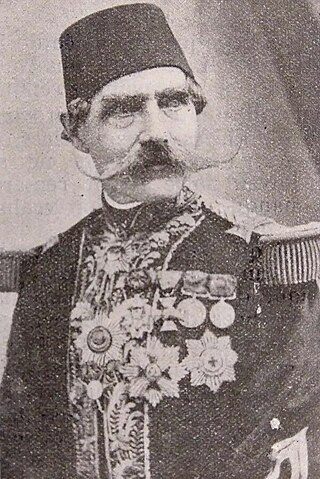
Charles de Schwartzenberg-Schwarzburg, also known as General Baron de Schwartzenberg and Emin Pasha, was a French-born Belgian aristocrat, soldier, and statesman of German descent. Schwartzenberg was in the service of multiple armies of his age. He was most notably employed in the Ottoman army, which he was a part of for nearly 20 years, attaining the rank of Pasha by 1859. Schwartzenberg documented his experiences up to 1863 in his memoir, simply entitled Mémoires.
David Passi, also known as Halil Pasha, was a Marrano who was Sultan Murad III's favourite, spy, adviser, and confidant. Despite this, Passi was not loyal to any one monarch since he worked as an agent for the Ottoman Empire, England, Venice, and Spain, all at the same time. He later chose to only serve the Ottomans. It was because of the ease of how Jews travelled throughout the Ottoman Empire was Passi and many other Jewish double agents able to remain uncaught for a long time, sometimes never.






